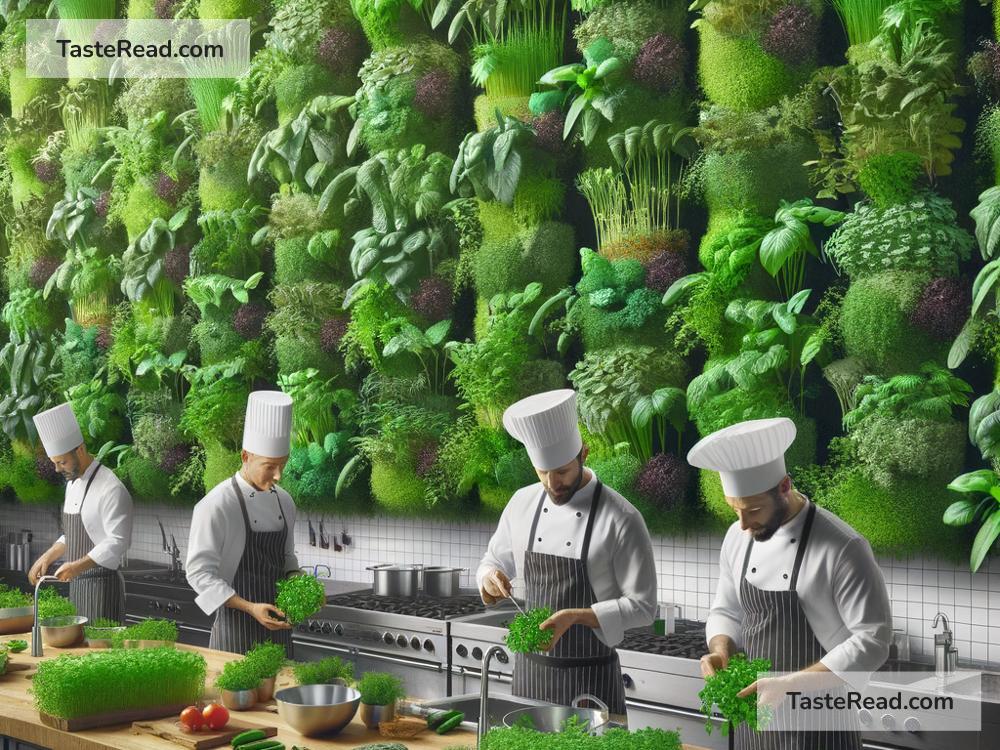Exploring the Role of Vertical Farms in Urban Kitchens
In the hustle and bustle of city life, our connection to nature, especially to the food we eat, can often feel distant. As cities grow upwards and outwards, green spaces and farmlands are pushed farther away. But what if we could bring the farm right into our kitchens? This is where the concept of vertical farms comes into play, particularly in the context of urban kitchens. Let’s dive into how these futuristic farms are changing the way we think about food and cooking in the city.
What Are Vertical Farms?
Imagine a bookshelf, but instead of books, each shelf is teeming with lush green plants. That’s essentially the idea behind vertical farms. They are innovative farming systems that grow plants upwards, often in layers, inside buildings or containers. This method is perfect for cities because it doesn’t need a lot of space, which is a scarce resource in urban areas. Plus, by controlling the environment, plants can grow faster and healthier, without the need for pesticides or much water.
Bringing the Farm to the Urban Kitchen
The idea of having a mini-farm right in your kitchen is no longer a daydream. Various technologies, from simple soil-based shelves to sophisticated hydroponic systems, allow urban dwellers to cultivate herbs, vegetables, and even fruits within the confines of their homes. This isn’t just about saving space; it’s also about reconnecting with the food we eat on a daily basis.
The Benefits of Kitchen Vertical Farms
Freshness at Your Fingertips
One of the most apparent perks of having a vertical farm in your kitchen is the constant access to fresh produce. No more wilted herbs or tasteless tomatoes from the grocery store. You can harvest what you need, when you need it, ensuring peak freshness and flavor for your dishes.
A Sustainable Choice
Vertical farms use up to 90% less water than traditional farming methods and don’t require transport from farm to table, considerably reducing their carbon footprint. This makes them an eco-friendly option, right in line with the growing demand for sustainable living practices, especially in urban environments.
A Learning Experience
Having a vertical farm at home isn’t just convenient; it’s educational. It offers a hands-on way to learn about growing food and encourages healthier eating habits. For families, it’s a fantastic way to teach children about where food comes from and the importance of sustainability.
Space-Saving & Aesthetic
Urban kitchens often struggle with space, but vertical farms make use of vertical space, which is frequently underutilized. Besides, these green installations can significantly enhance the look and feel of a kitchen, adding a touch of nature and warmth to the modern urban home.
Challenges to Consider
While the idea of vertical farms in urban kitchens is exciting, there are a few hurdles to consider. Initial setup costs can be high, especially for more advanced systems. There’s also a learning curve in understanding how to best care for your indoor farm. However, with a bit of research and patience, these challenges can be overcome, opening up a world of fresh and sustainable food production at home.
The Future is Green
As technology continues to evolve, the prospect of integrating vertical farms into our daily lives becomes increasingly viable. Innovations in lighting, automation, and hydroponics are making these systems more efficient and user-friendly. Picture a future where your kitchen doesn’t just cook food but grows it too. It’s a step towards more sustainable living, reducing our impact on the planet while enhancing our connection to the food we consume.
In Conclusion
The incorporation of vertical farms into urban kitchens represents a merging of the old and the new. It marries the ancient practice of agriculture with cutting-edge technology to answer the growing need for sustainable, local food sources in cities. As we become more conscious of our environmental footprint and the importance of eating healthily, these innovative farming methods are not just a trend but a necessary evolution. It’s time to think vertically when it comes to urban agriculture, starting in the heart of our homes—the kitchen.


